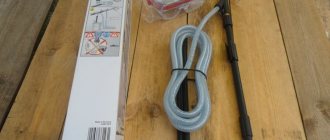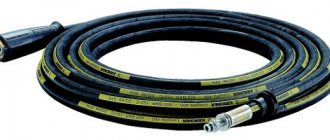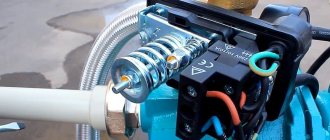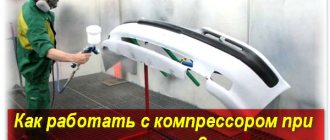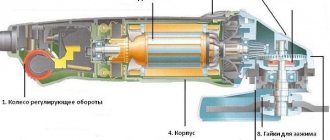Kärcher high-pressure washers have long received well-deserved recognition. The name of the company itself has become a household word and often refers to a high-pressure washer from any manufacturer. With the advent of equipment on sale for car enthusiasts, it has become possible to wash cars at home almost at a professional level.
The range of household high-pressure washers on the market is quite extensive, so it is not easy for the average motorist to make a choice in favor of any model.
At the end of the article there is a detailed video instruction on choosing a high-pressure washer for washing your car. It will also probably be useful for you to learn about how to properly wash a car with your own hands.
To substantiate the arguments in favor of choosing one or another mini-wash model, it is necessary to have an understanding of the operating principle and design of the equipment, information about the manufacturer, as well as the advantages and disadvantages of specific design and technological solutions. Read about all this below.
Operating principle of a high pressure washer
A device that implements the idea of cleaning objects with a jet of water supplied under high pressure was patented back in 1950 by German engineer Alfred Karcher. The production he founded (the world's largest manufacturer of a whole line of cleaning equipment - high-pressure washers) is still in operation today.
The principle underlying the invention is quite simple - it is the formation of a “cleaning” jet of water under the maximum pressure for specific conditions. Here we can give a simple analogy: when washing with a regular hose connected to a water supply, in order to better wash away contaminants, the end of the hose is sometimes clamped, achieving the effect of “spraying” the jet under high pressure.
Structurally, a high-pressure mini washer consists of a pump driven by an electric (most often) or gasoline (less often) engine, a system of tanks, automation units, seals, hoses, valves and nozzles.
Typically, mini-washers use an axial piston type pump with an inclined washer. The main advantage of this type is high performance with small dimensions. The operating principle of the pump is shown schematically in the figure below.
Rotor 1 2 move during operation . The pistons, in turn, rest against the inclined washer 3 and, when moving in a circle relative to the washer, perform reciprocating movements, which determine the suction or ejection stroke of the liquid, depending on which spool groove 4 they are located in relation to.
In practice, both a rotating rotor with cylinders and a stationary washer are used, and vice versa: stationary cylinders and a rotating swashplate.
Axial piston pumps can provide a pressure of up to 200 atm, but in practice, especially for household mini-washers, a maximum operating pressure of 120 to 160 atm is quite sufficient.
The technological process of washing provides for modes of frequent switching on and off of equipment (transient processes in technical language). For electric motors, any transient process means a difficult operating mode: the starting current values are several times higher than during stationary operation. The consequence of heavy operating conditions is increased heat generation and possible engine overheating.
To prevent negative consequences, increased attention is paid to engine cooling in high-pressure washers. Structurally, this issue was solved by an additional air cooling fan and removal of heated air from the device body. The Karcher company has recently begun to use a system more efficient than air: a water cooling system.
The following figure shows a typical design of a modern Kärcher pressure washer with a water cooling system.
Water is taken from an external source through pipe 2 . In the absence of the possibility of connecting to a water supply, many manufacturers have models of mini-washes for cars with water intake from a container: bucket, barrel, swimming pool. Usually this function is combined with the function of drawing water from the water supply.
An electric motor 1 equipped with a water cooling system 3 drives the swashplate of the axial piston pump with a bearing block 4 . The washer, in turn, ensures the reciprocating movement of the pistons 6 . Water enters the cylinders through the suction valve 5 . Valve 7 serves to relieve excess pressure in the system. Injector 8 is necessary to generate the required pressure of the output jet entering the gun from channel 9 . Tank 10 serves to supply detergent to the system during the car washing process.
Dimensions, weight, maximum pressure level, permissible continuous operation time, specific water consumption, durability and cost of equipment - these parameters directly depend on the materials used for the manufacture of the main parts and washing units and design features. The requirements for professional equipment do not allow for either small dimensions or low cost of the device, and such devices no longer belong to the class of mini-washers.
So, the answer to the question: “What is a mini-wash and how does it differ from other types of car washes?” contains the following main provisions:
- provides washing under high (up to 160 atm.) pressure in domestic conditions;
- compact (small size and weight);
- not expensive to purchase and maintain;
- unpretentious to the water supply source (can be used in field conditions);
- provides the possibility of using detergents.
Now let's look at the main technical characteristics of Kärcher miniwashers.
Design features
To understand how a Karcher works, you first need to understand its structure and design. The sink is a mobile, simple device that is compact in size, takes up little space, and does not require special care and maintenance. The main structural elements of washing equipment:
- electric motor;
- pump (pump);
- water intake hose;
- outlet hose;
- frame;
- network cable;
- nozzle.
The package usually includes several attachments. The performance of the device depends on the power of the electric motor. Let's look at what these elements are responsible for separately.
Main characteristics of Karcher miniwashers
The Karcher company divides its entire range of household products into several classes: from the simplest (K2) to semi-professional (K7). Conventionally, different classes comprise three large groups:
- K2, K3 – entry level;
- K4, K5 – average level;
- K7 – premium segment.
Let's take a closer look at each group and find out how they differ from each other, and what their pros and cons are.
Entry-level mini-washers (classes K2, K3)
Class K2, K3 sinks are intended mainly for cleaning garden paths, bicycles, and garden tools. They can be used for washing compact cars, but you should understand the limitations imposed by the design and materials of the equipment:
- The upper threshold of working pressure is no more than 110 - 120 atm;
- Be sure to connect to a pressurized water supply.
Theoretically, it is possible to use a stationary container, but in this case the operating pressure at the outlet is not achieved and the already limited resource of the mini-wash is sharply reduced.
Main characteristics of equipment of this class:
- consumption capacity (maximum) – up to 380 l/hour;
- productivity in terms of processing surface area (maximum) – up to 25 m2/hour;
- power consumption – 1.6 kW;
- weight (without accessories) – no more than 5.12 kg.
The advantages of entry-level washers include low price, the presence of attachments in the kit that allow you to increase the efficiency of the process (primarily a mud cutter), and compactness.
Mid-level mini-washers (classes K4, K5)
The middle class of mini-washers K4, K5 provide the consumer with more functionality:
- Water intake not only from the water supply, but also from stationary open sources (bucket, barrel, pool).
- The maximum pressure rises to 145 atm.
- An additional set of accessories included in the package compared to the initial class.
Also in this class, a water engine cooling system is installed, which increases the continuous operation time and durability of the equipment.
Main characteristics of middle-class mini-washers:
- consumption capacity (maximum) – up to 500 l/hour;
- productivity in terms of processing surface area (maximum) – up to 40 m2/hour;
- power consumption – 2.1 kW;
- weight (without accessories) – no more than 13.8 kg.
The advantages of the middle class are achieved due to a higher price, increased size and weight of the equipment.
Premium mini-washers K7
The highest level K7 is an almost semi-professional mini-wash with even wider capabilities than in the previous class.
In addition to increasing the maximum pressure level to 160 atm. and thereby obtaining higher productivity, washes at this level are equipped with pressure control systems directly on the gun handle and a “start-stop” system that automatically turns off the engine if necessary. In addition, the delivery package of such sinks includes a rich set of accessories.
Main characteristics of K7 class high-pressure mini washers:
- consumption capacity (maximum) – up to 600 l/hour;
- productivity in terms of processing surface area (maximum) – up to 60 m2/hour;
- power consumption – 3 kW;
- weight (without accessories) – no more than 22.3 kg.
The manufacturer also includes mini-washes with a gasoline engine in the K7 class.
It should be especially noted the need to comply with safety rules (set out in the instructions) when operating high-pressure washers: the edge of the high-pressure jet in a certain position is akin to a sharp cutting tool.
Pump
Hydrodynamic cleaning devices are equipped with plunger or piston type pumps. The functionality and service life of washing equipment depends on the characteristics of the pump. In budget models, single-piston pumps are installed, the parts of which are made of plastic. They are not of high quality and have a limited working resource.
Expensive professional devices are equipped with pumps with several pistons. The elements of the piston group are made of a metal alloy. It may be alloy steel. The body is usually aluminum. Premium segment models are equipped with ceramic plungers. It is the pump that is responsible for supplying the working fluid.
The most popular pressure washer
Karcher products have been ranked first in almost any rating for many years. This is understandable: progressive engineering developments are superimposed on the German quality and traditions of the company.
Which model range is most popular among motorists? The results of recent surveys of Russian consumers give a clear answer: Karcher K5 Compact with an 8-meter hose with a jet tube and a mud cutter included. The model has absorbed the best achievements of the highest class:
- silumin pump is more durable than plastic;
- water cooling of the engine;
- high performance;
- the possibility of using an open reservoir as a source;
- presence of an integrated filter.
At the same time, the cost of equipment is almost half that of the K7 class.
A few words about the Karcher company
The Kärcher company today is a multinational corporation with more than 6 thousand employees. The company's products are recognized all over the world and are sold in 160 countries; 36 thousand service locations provide proper repairs and maintenance. At the same time, every year the area of presence of the company’s products in the world expands. In Russia, this company is also very popular; in terms of growth rates and total sales volumes, our country is currently among the top five leaders. Many owners of mini car washes call their machines Karcher, even if they are made by other manufacturing companies.
Over more than 70 years of its history, Kärcher has received various awards and prizes many times. The advantages of Karcher products, as evidenced by reviews, are:
- extraordinary strength;
- service life significantly exceeding any analogues (subject to the rules of use);
- a large selection of diverse accessories that make the equipment multifunctional;
- modern design and thoughtful design of absolutely all components, highest ergonomics;
- standard product quality, excellent technical parameters;
- high productivity of equipment, ensuring time savings and high quality processing.
It is not for nothing that Karcher equipment is considered the leader among special cleaning and washing equipment among all manufacturers in the world. Legendary German quality, as well as affordable prices, make the equipment of this company the optimal choice for the user.
Selection criteria when purchasing a mini washer
If the brand is determined, then in order to buy a Karcher high-pressure washer, you need to formulate the main selection criteria. These include:
- purchase budget;
- frequency of equipment use;
- availability of a source of water supply under pressure;
- the presence of impurities and contaminants in the water (the need for filtration).
In our opinion, choosing a mini-wash model should be based on the following considerations:
- If you are considering a country use option (no more than 5-6 months a year) for washing one compact class car and if there is a source of water supply under pressure (the water itself must be free of foreign impurities) and the budget to buy a Karcher is limited, then the K2 model is suitable .
- If the mini-wash is designed to be used for 2-3 cars in a family, is used constantly and there is a need to draw water from open tanks, then it is advisable to purchase a model from the K5 class.
- If a car enthusiast is willing to pay for additional options and ease of use of the equipment: pressure regulation from a gun and display of the adjustment result on a liquid crystal display, an energy-saving start-stop function, an expanded set of accessories and accessories, then you can consider purchasing a model from the K7 class.
In any case, it is worth remembering that the stingy pays twice. Therefore, we advise you to be responsible when choosing a mini-wash and carefully weigh all the Pros and Cons before purchasing it, and not after.
Filters
Purified drinking water is rarely used for washing cars. In most cases, devices are connected to sources of water, which is intended for technical purposes. This means that it may contain various impurities and small solid particles. Regular use of such a working fluid leads to failure of the device. To prevent such situations, manufacturers equip equipment with filters. These elements are installed in front of the hose and connected to the incoming pipe. The most preferred are models equipped with two types of filters.
Correct operation and maintenance
Proper maintenance of washing equipment will provide the high-pressure apparatus with a long working life and protection from breakdowns and failures. Models equipped with an electric motor do not require special maintenance, but some preventative measures will still have to be taken.
- Change of oil. The metal parts of the installation rub against each other during operation. Lubrication reduces friction, slowing down their wear. Manufacturers recommend changing the oil every 60 hours of operation.
- Conducting a preventive examination. Sometimes minor faults associated with wear and tear of consumables are difficult to notice. Their presence increases the load on the system. To prevent the occurrence of more complex breakdowns, it is necessary to carry out preventive inspections every 300-400 hours of operation of the sink and, if necessary, carry out minor repairs. Particular attention should be paid to the condition of the pump, and also lubricate the dynamic components.
- Inspect the fuel filter. This operation is performed in heated devices. The filter element must be thoroughly cleaned of salt deposits. If the filter is heavily soiled, it is recommended to install a new one.
- Pump repair. During the operation of a Karcher car wash, the pump is subjected to increased loads and therefore often fails. The most common failure is wear of the plunger gaskets; it provokes the appearance of leaks in the system. To restore normal operation of the pump, these elements must be changed regularly.
- Oil seals. Water also flows through them. The elements are damaged by microparticles contained in water and have an abrasive effect on the seals.
All worn-out elements of the device must be replaced in a timely manner. Otherwise, leaks will negatively affect the performance of the equipment. For example, if you are using a model with a Total Stop system, then a fluid leak will give incorrect signals to the mechanism. In such cases, the car wash operates jerkily, starts and turns off randomly, and the process of washing the car is accompanied by strong vibrations. In addition, malfunctions in the system may appear for the following reasons:
- bypass failure;
- rupture of the inlet or outlet hose;
- damage to the adapter gasket.
It is necessary to regularly inspect and repair equipment to protect it from complex breakdowns and final failure.
Technology capabilities
The main purpose of the unit is car washing. To do this, you no longer have to go to a car wash, which saves time and allows you to get your car in order at any convenient time. But in addition, the unit can be used for other purposes. It will not be superfluous for owners of country houses, private cottages, boathouses on the shore of a reservoir.
Wash away dirt from garden paths, tidy up the pool after winter, quickly clear dust from a garden gazebo or bench, remove construction dust - all this is done quickly and easily thanks to the powerful flow of water. But in order for the unit not to disappoint, you need to choose it correctly.
